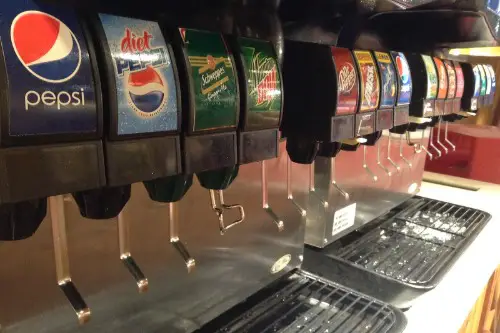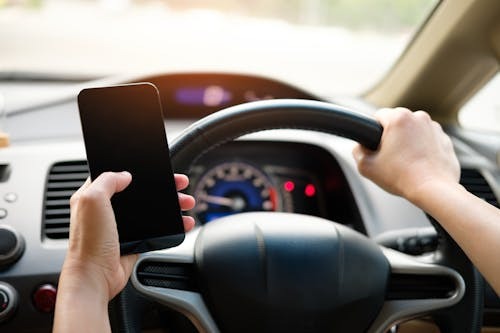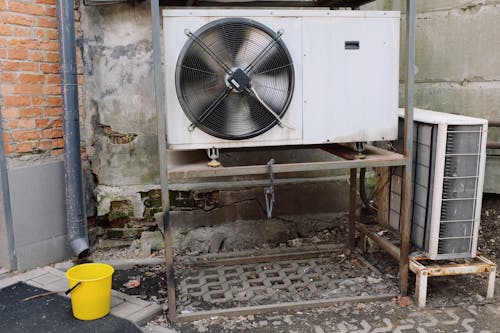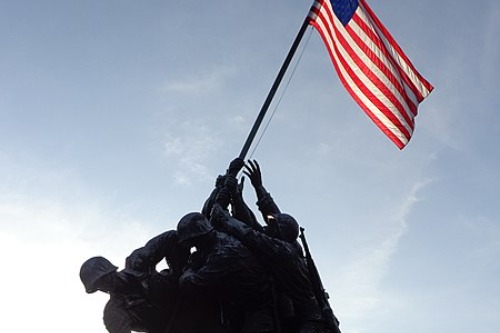1. Talking Loudly in Public Spaces

You’ve probably heard this one before—and maybe experienced it. Americans often speak loudly, whether on the phone, at a restaurant, or in line at the airport. It’s not meant to be rude; it’s just part of a culture that values open expression and confidence. Plus, with more space and less density, loud voices aren’t always a nuisance in the U.S.
But once abroad—or even in quieter urban areas nearby—that volume stands out. In countries like Japan or Sweden, public spaces are meant to be calm and quiet. Loud conversation is seen as disruptive or attention-seeking. Americans often learn this the hard way with a few sideways glances or even a gentle “Shhh.”
2. Free Refills on Drinks

Americans are so used to bottomless soda at restaurants that they assume it’s a global standard. But drive just a few miles into Canada or head to Europe, and suddenly every extra Coke costs you. The U.S. culture around abundance and customer service is behind this habit—it’s a mix of hospitality and marketing. Many restaurants see free refills as a cheap way to keep customers happy and coming back.
Outside the States, though, drinks are often priced with more emphasis on value and waste reduction. Places like Germany or the UK often serve smaller portions with no automatic refill. It’s not considered rude—it’s just normal. For Americans abroad, the first “no refill” moment is usually a minor culture shock.
3. Driving Everywhere, Even Just Down the Block

In the U.S., cars are more than a convenience—they’re practically a lifeline. Even in many cities, walking or public transportation can be frustrating or unsafe. That’s partly because of how American suburbs and infrastructure are designed, often prioritizing highways over sidewalks. So it’s not uncommon for people to drive half a mile just to get milk.
However, in other countries—and even some nearby U.S. cities with better transit—people rely heavily on walking, biking, or subways. Europeans, for instance, are often shocked at how much Americans drive. When Americans visit cities like Amsterdam or Toronto, they suddenly realize how rare car dependency can be. It’s not just about getting around; it’s about how communities are built.
4. Air Conditioning Set to “Arctic Tundra” Mode

Walk into any American store, office, or home in July, and you might need a sweater. Americans tend to crank the A/C far colder than most of the world considers reasonable. It’s partly cultural and partly about building standards—central air is common in the U.S., but not so much elsewhere. People get used to that crisp, dry, refrigerated air.
In many parts of Europe or Latin America, air conditioning is considered a luxury or even a health concern. Locals might open windows, use fans, or just adapt to the heat. So when an American tourist walks into a room and says, “Can we turn the A/C up?”—it can lead to a standoff. Sometimes even 10 miles across a border, people have different standards for comfort.
5. Ice in Every Drink

Want water in the U.S.? Expect it to arrive with a mountain of ice cubes, no matter the weather. This chilly habit is rooted in both availability and the idea that ice makes drinks feel fresher. It’s so normalized that drinks without ice can seem “off” to many Americans.
Elsewhere, though, you’ll often get a small glass of room-temperature or slightly chilled water. In places like France or China, too much ice is thought to be bad for digestion. Some restaurants may not even have ice on hand at all. Americans often find this baffling, not realizing how specific this frozen preference really is.
6. Smiling at Strangers

In much of the U.S., it’s totally normal—expected, even—to smile and nod at people you pass on the street. It’s seen as a basic gesture of friendliness and politeness. This behavior is especially strong in the Midwest and South, where “Southern hospitality” is a cultural staple. Americans assume it’s a simple way to be nice.
But in many other countries, that kind of behavior reads as odd or overly familiar. In some cultures, smiles are reserved for people you actually know. A stranger smiling at you can feel like flirting or just plain weird. So while Americans are trying to be friendly, others might just think, “What’s this person’s deal?”
7. Tipping Everyone, All the Time

In the U.S., tipping is a social expectation and often necessary to supplement service workers’ incomes. That’s because federal law allows a lower minimum wage for tipped workers—as low as $2.13 per hour. So Americans get used to tipping baristas, drivers, valets, and sometimes even the person handing them a muffin. Many think it’s a universal courtesy.
But across the border or in most of Europe and Asia, tipping is either built into the bill or seen as unnecessary. In Japan, tipping can even be perceived as rude or confusing. The service charge is often automatically included, and workers are paid a livable wage. So when Americans travel and pull out cash to leave on the table, locals might give a puzzled look.
8. Massive Portion Sizes

The “land of the free refills” is also the land of the double bacon cheeseburger that could feed three. In the U.S., portion sizes are often 2–3 times what’s served elsewhere, and many restaurants pride themselves on big servings. The cultural emphasis on value and abundance plays a big role. “More food for your money” just feels like a good deal.
But outside of the U.S., smaller portions are often the norm—not because people are stingy, but because they’re used to eating only what they need. In France or Japan, quality often beats quantity. And leftovers aren’t a given—some places don’t even offer boxes. For American travelers, it can be a shock when a “large” meal feels more like an appetizer.
9. Flags. Everywhere.

In the U.S., it’s normal to see American flags flying from homes, cars, schools, businesses—pretty much anywhere. It’s a sign of patriotism, pride, and identity, and many Americans are raised to view the flag with near-religious reverence. National holidays often come with full flag displays, fireworks, and parades. It’s baked into American culture from a young age.
But other countries tend to be much more reserved with national symbols. In Germany, for example, excessive flag-waving is still politically sensitive due to historical context. Even in countries with strong national pride, flags aren’t as ever-present. So Americans often don’t realize how unique their flag enthusiasm really is.
10. Asking “What Do You Do?” Right Away

At a party or on a plane, Americans love to break the ice with, “So, what do you do?” It’s a casual way to get to know someone—and in the U.S., careers are often tied to identity. It can lead to meaningful conversations or quick common ground. But it also reflects a culture that prioritizes work and achievement.
In many other countries, especially those with stronger work-life balance cultures, that question can feel intrusive. People may prefer to talk about hobbies, family, or mutual interests first. Bringing up work too early can come across as status-seeking or nosy. Americans may not mean anything by it, but it reveals a lot about values.
11. Wearing Workout Clothes Literally Everywhere

Leggings, sneakers, and athletic tops aren’t just for the gym in the U.S.—they’re everyday wear. This trend, often dubbed “athleisure,” has taken off thanks to brands like Lululemon and Nike and the American focus on casual comfort. It’s totally normal to wear sporty clothes to brunch, errands, or even casual workspaces. Americans value utility and style that doesn’t feel stuffy.
In other countries, however, there’s often a clearer line between workout wear and public clothing. In parts of Europe or Asia, showing up to a restaurant in yoga pants can seem underdressed or even disrespectful. People tend to dress more formally or intentionally when outside the house. So while Americans feel relaxed, others might see it as sloppy.
12. Expecting Stores to Be Open All the Time

In the U.S., 24/7 access to stores, pharmacies, and drive-thrus feels like a given. Even on holidays, many places stay open at least part of the day. Convenience and customer service are major selling points, and there’s often an economic pressure to stay open longer. Americans get used to having what they want, when they want it.
But in other countries, businesses may close early, shut down on Sundays, or take extended lunch breaks. In places like Spain or Italy, siesta hours and family time are prioritized. Travelers can be shocked to find everything closed in the middle of the afternoon. It’s not poor service—it’s just a different philosophy about time.
This post 12 Everyday Behaviors That Americans Swear Are Universal—Until You Travel 10 Miles was first published on American Charm.


